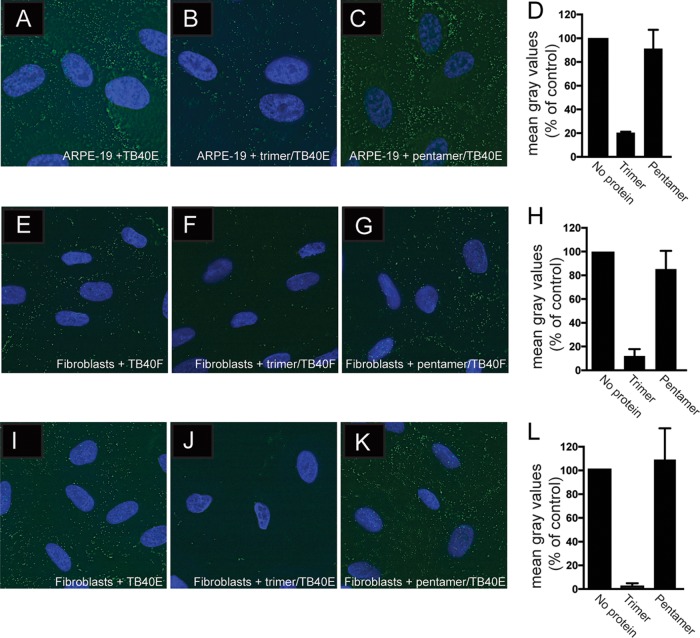FIG 4.
Effects of soluble protein on adsorption of HCMV virus particles onto cells. (A to C) ARPE-19 cells on glass coverslips were either left untreated or incubated with soluble trimer or pentamer complexes (100 μg/ml) for 1 h at 4°C followed by 1 h of incubation with HCMV TB40 E-UL32-GFP virus particles at 4°C. (D) Histograms showing the quantification of HCMV virus particles binding to cell surfaces for the conditions represented in panels A to C. (E to G) Fibroblast cell monolayers were either not treated or incubated with soluble trimer or pentamer complexes (100 μg/ml) for 1 h at 4°C followed by 1 h of incubation with HCMV TB40 F-UL32-GFP. (H) Histograms showing the quantification of HCMV virus particles binding to cell surfaces for the conditions represented in panels E to G. (I to K) Fibroblast cell monolayers were either not treated or incubated with soluble trimer or pentamer complexes (100 μg/ml) for 1 h at 4°C followed by 1 h of incubation with HCMV TB40 E-UL32-GFP virus particles at 4°C. (L) Histograms showing the quantification of HCMV virus particles binding to cell surfaces for the conditions represented in panels I to K. In all cases, the cells were washed once with cold PBS and then fixed with 4% paraformaldehyde. The cells were then permeabilized, counterstained with DAPI (4′,6-diamidino-2-phenylindole), and mounted onto glass slides with Fluoromount-G. Images were captured by a 60× objective with the Deltavision Core DV Widefield Deconvolution system. (D, H, and L) The data in the histograms are displayed as mean gray values (arbitrary units) relative to control conditions as analyzed by ImageJ. Data were collected from three separate images for each condition.

